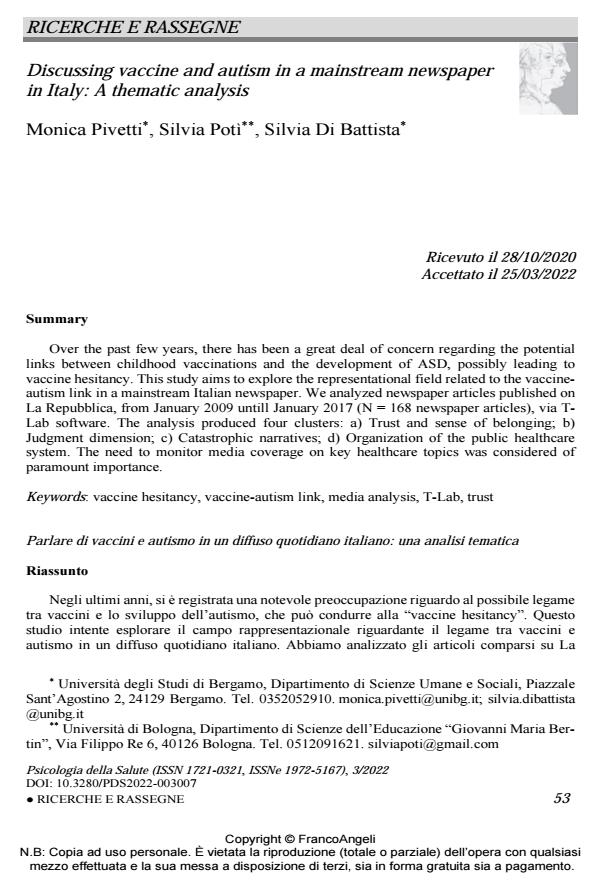Discussing vaccine and autism in a mainstream newspaper in Italy: A thematic analysis
Journal title PSICOLOGIA DELLA SALUTE
Author/s Monica Pivetti, Silvia Potì, Silvia Di Battista
Publishing Year 2022 Issue 2022/3
Language English Pages 22 P. 53-74 File size 379 KB
DOI 10.3280/PDS2022-003007
DOI is like a bar code for intellectual property: to have more infomation
click here
Below, you can see the article first page
If you want to buy this article in PDF format, you can do it, following the instructions to buy download credits

FrancoAngeli is member of Publishers International Linking Association, Inc (PILA), a not-for-profit association which run the CrossRef service enabling links to and from online scholarly content.
Over the past few years, there has been a great deal of concern regarding the potential links between childhood vaccinations and the development of ASD, possibly leading to vaccine hesitancy. This study aims to explore the representational field related to the vaccine-autism link in a mainstream Italian newspaper. We analyzed newspaper articles published on La Repubblica, from January 2009 untill January 2017 (N = 168 newspaper articles), via T-Lab software. The analysis produced four clusters: a) Trust and sense of belonging; b) Judgment dimension; c) Catastrophic narratives; d) Organization of the public healthcare system. The need to monitor media coverage on key healthcare topics was considered of paramount importance.
Keywords: vaccine hesitancy, vaccine-autism link, media analysis, T-Lab, trust
- Self-transcendence values, vaccine hesitancy, and COVID-19 vaccination: some results from Italy Monica Pivetti, Francesca Giorgia Paleari, Daniela Barni, Claudia Russo, Silvia Di Battista, in Social Influence 2261632/2023
DOI: 10.1080/15534510.2023.2261632
Monica Pivetti, Silvia Potì, Silvia Di Battista, Discussing vaccine and autism in a mainstream newspaper in Italy: A thematic analysis in "PSICOLOGIA DELLA SALUTE" 3/2022, pp 53-74, DOI: 10.3280/PDS2022-003007